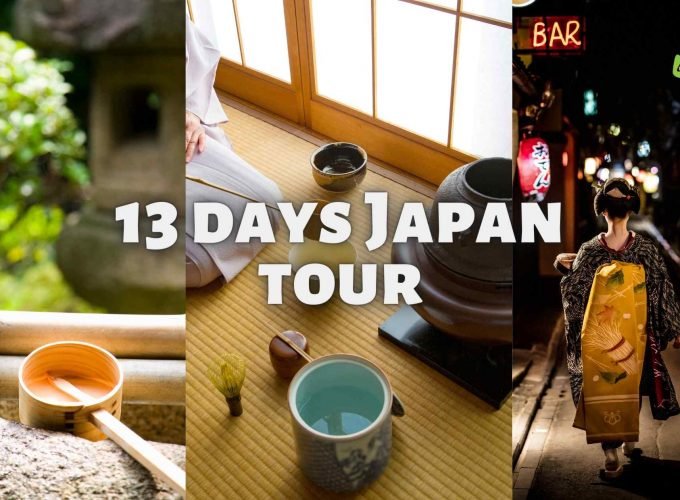About Todai-ji Temple
Todai-ji Temple is a historic Buddhist temple located in the city of Nara, Japan. The temple was constructed in 752 AD by Emperor Shomu, and it served as the head temple of all provincial temples throughout Japan. The temple is home to several impressive buildings, including the Daibutsu-den (Great Buddha Hall), which houses a massive bronze statue of the Buddha that is one of the largest in the world.
In addition to the Great Buddha, Todai-ji Temple also features other notable structures, including the Nigatsu-do Hall, which offers stunning views of the city and surrounding hills, and the Hokke-do Hall, which houses beautiful Buddhist statues and artwork. The temple complex also includes a museum that showcases a collection of historic artifacts and artwork.
Todai-ji Temple is recognized as a UNESCO World Heritage site and is considered one of the most important and historically significant temples in Japan. It is a popular destination for both tourists and locals, and visitors can enjoy strolling through the beautiful temple grounds, interacting with the friendly deer that roam the area, and learning about the rich cultural and religious heritage of Japan.
History timeline of Todai-ji Temple
Here is a brief history timeline of Todai-ji Temple in Nara, Japan:
- 728: Emperor Shomu orders the construction of Todai-ji Temple to promote Buddhism and serve as the head temple of all provincial temples throughout Japan.
- 752: The temple is completed and officially named “Tōdai-ji” (the Great Eastern Temple). The Daibutsu-den (Great Buddha Hall) is also completed and houses a large bronze Buddha statue.
- 1180: The temple is destroyed in a fire during a war between the Taira and Minamoto clans.
- 1185: The temple is rebuilt by the monk Chogen with the support of the Kamakura shogunate.
- 1567: The temple is damaged by fire again and is rebuilt with the support of Oda Nobunaga, a powerful daimyo (feudal lord).
- 1692: The temple undergoes a major renovation and expansion project, during which the Daibutsu-den is reconstructed and enlarged to its current size.
- 1949: Todai-ji is designated as a National Treasure by the Japanese government.
- Present day: Todai-ji remains one of the most important temples in Japan and is a popular tourist attraction, drawing millions of visitors each year to see the impressive Great Buddha statue and other historic buildings on the temple grounds.
How to reach Todai-ji Temple
Todai-ji Temple is located in the city of Nara, Japan, and can be reached by various means of transportation:
- Todai-ji Temple By train: From Kyoto, take the JR Nara Line to Nara Station (about 45 minutes). From Osaka, take the JR Yamatoji Line to Nara Station (about 40 minutes). From Nara Station, take the city bus #2 or #18 and get off at the Daibutsuden Kasuga-taisha Honden bus stop. The temple is a short walk from the bus stop.
- Todai-ji Temple By car: Todai-ji Temple can be accessed by car via the Nishi-Meihan Expressway or the Keinawa Expressway. However, parking in the area is limited and can be expensive.
- Todai-ji Temple By foot or bicycle: The temple is located in Nara Park, a large park in central Nara that is within walking or cycling distance of many of the city’s other attractions. Visitors can rent bicycles at the park entrance or from rental shops in the city.
Once you arrive at the temple, you can purchase tickets at the entrance and explore the historic buildings and artifacts at your leisure. The temple is open daily from early morning until late afternoon, and the best time to visit is usually in the morning or on a weekday to avoid crowds.
Do's and Dont's at Todai-ji Temple
Here are some important Do’s and Don’ts to keep in mind when visiting Todai-ji Temple in Nara, Japan:
Do’s:
- Dress appropriately and respectfully. Visitors should cover their shoulders and knees when entering the temple grounds.
- Observe the rules and instructions given by the temple staff and volunteers.
- Respect the culture and traditions of the temple and its visitors.
- Take off your shoes when entering buildings on the temple grounds.
- Be mindful of other visitors and avoid making loud noises or disrupting others during prayer or meditation.
- Explore the temple grounds at a leisurely pace and take in the historic and cultural significance of the site.
Don’ts:
- Touch or climb on the temple’s historic artifacts or buildings.
- Smoke or eat inside the temple grounds.
- Bring pets or animals onto the temple grounds.
- Litter or damage the natural surroundings of the temple and its buildings.
- Take photographs or use flash photography in prohibited areas or during ceremonies or rituals.
- Disrupt or disrespect the peaceful atmosphere of the temple and its grounds.
By following these Do’s and Don’ts, visitors can show respect for the temple’s heritage and culture while enjoying a meaningful and memorable visit to this historic and significant site.
Reviews of Todai-ji Temple by tourists
Here are some reviews of Todai-ji Temple from visitors:
- “Todai-ji Temple is a must-visit when in Nara. The massive Buddha statue and the historic buildings are truly impressive. The atmosphere is serene and peaceful, and the deer that roam the area add a unique touch to the experience.” – Emily, USA
- “The temple grounds are stunning, and the architecture is truly awe-inspiring. The Great Buddha Hall is simply amazing, and the craftsmanship of the statue is remarkable. Definitely one of the highlights of my trip to Japan.” – Thomas, Canada
- “The deer that wander around the temple grounds are cute, but they can be a bit aggressive. Be careful not to provoke them, and watch your belongings as they may try to steal food or other items. Overall, a great experience, and I highly recommend a visit to Todai-ji Temple.” – Sarah, UK
- “As a history buff, I found Todai-ji Temple to be fascinating. The temple’s rich history and cultural significance are truly captivating, and the museum has a great collection of artifacts and artwork. A truly unique and educational experience.” – Michael, Australia
- “I was blown away by the sheer size of the Great Buddha statue. It’s incredible to think that it was built over 1,000 years ago! The temple is a beautiful and tranquil place, and I highly recommend a visit to anyone traveling to Nara.” – Anna, Germany
Overall, visitors tend to highly recommend Todai-ji Temple for its impressive architecture, rich history and cultural significance, serene atmosphere, and unique experience of interacting with the friendly deer that roam the area.
Best time to visit Todai-ji Temple ?
The months of spring and fall are ideal for a trip to Todai-ji Temple because the temperature is often pleasant during those times of year and there are fewer people there. It is recommended that, if at all possible, you avoid visiting the temple during the busiest seasons of the year for tourists, which include the summer months and the weeks around major national holidays.
When the cherry blossoms in Nara Park are in full bloom in the spring (March to May), Todai-ji Temple is a particularly lovely and peaceful place to visit. The best time to go is during this period. The fall season, which runs from September to November, is another wonderful time to visit the temple because the changing colors of the leaves create a breathtaking backdrop for the structure.
If you want to visit the temple without dealing with a lot of other people, the best time to go is either very early in the morning or very late in the afternoon, especially on weekdays. During the winter months (December to February), the temple is less popular overall, but the weather during this time of year can be quite chilly and snowy.
Because the temple is open every day from early morning until late afternoon, regardless of the season, you will have plenty of time to look around at the historic buildings and relics at your own pace while appreciating their significance.









Comment (0)